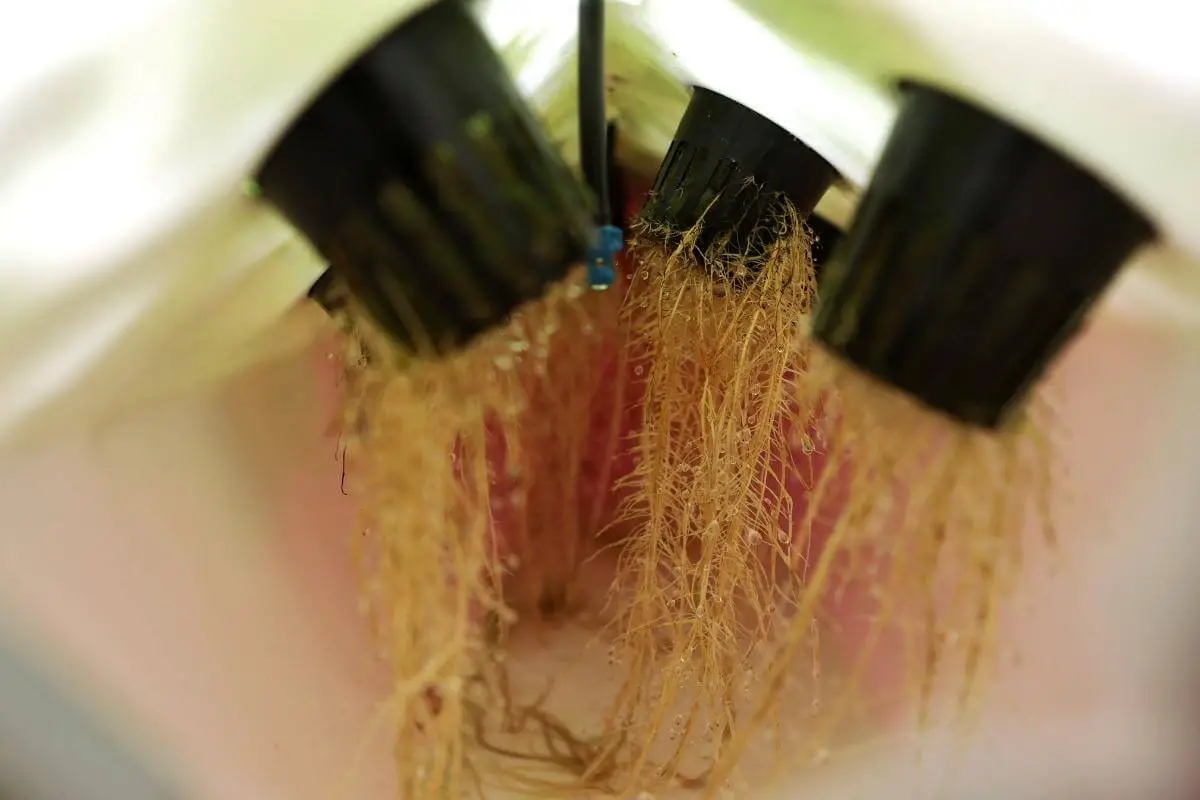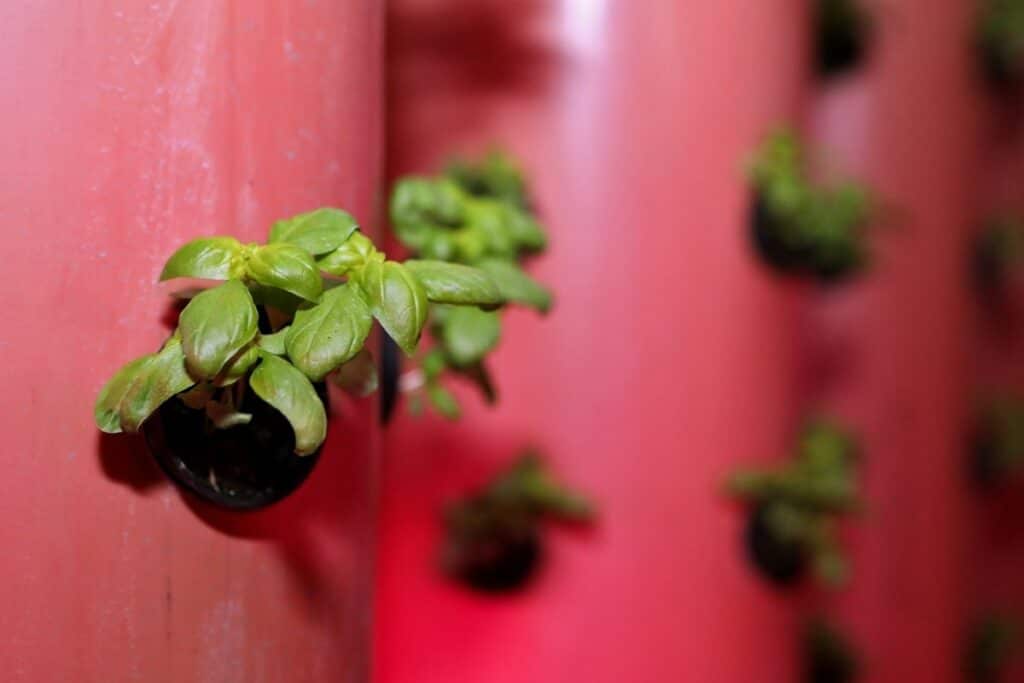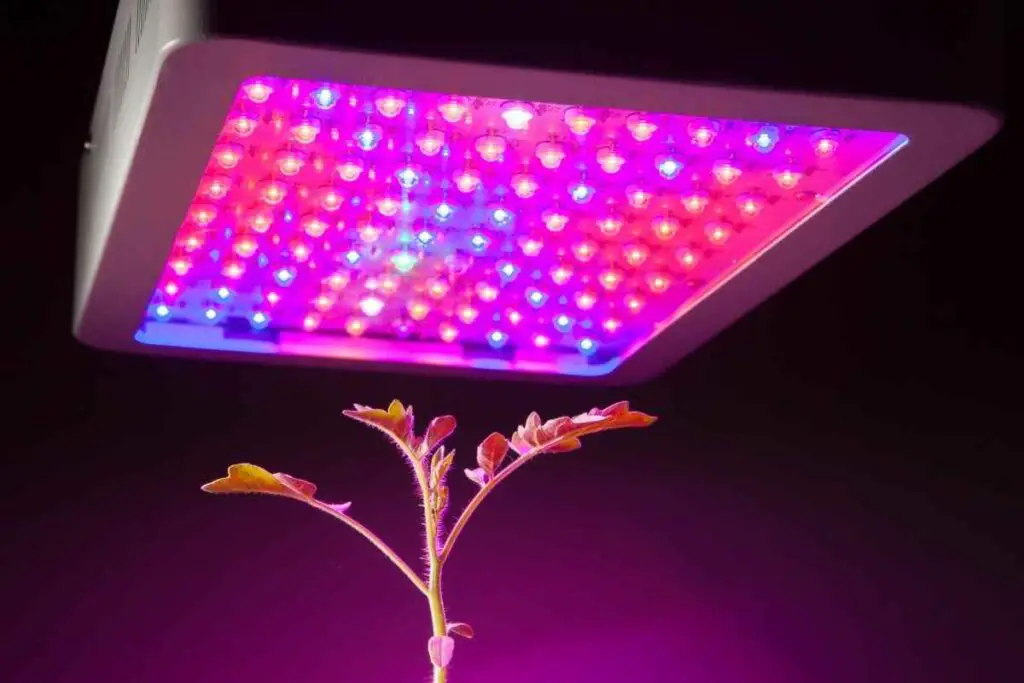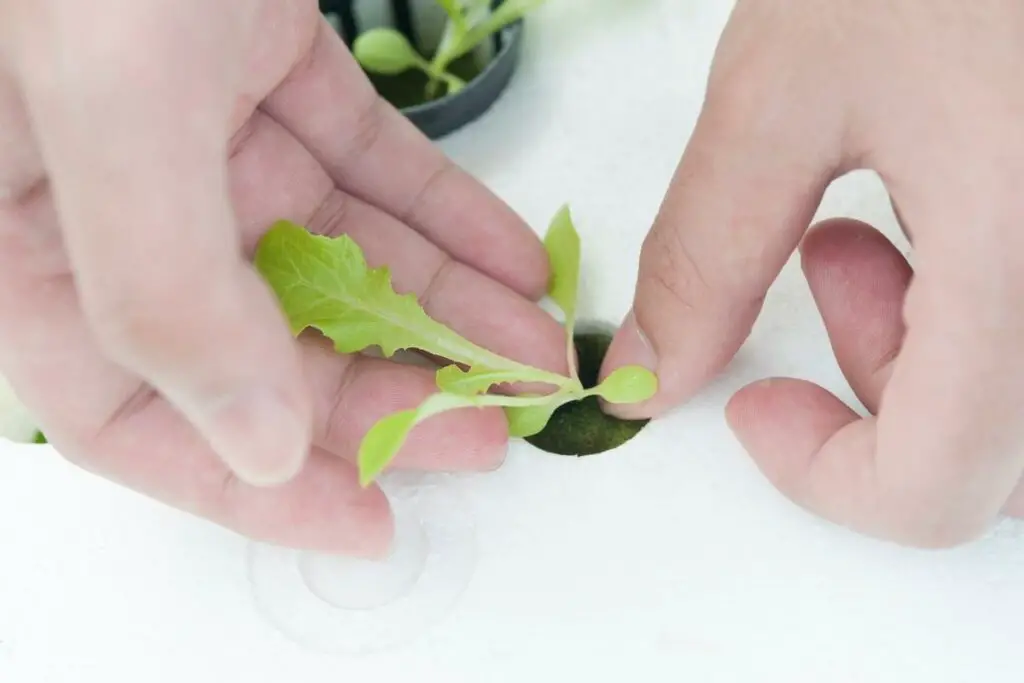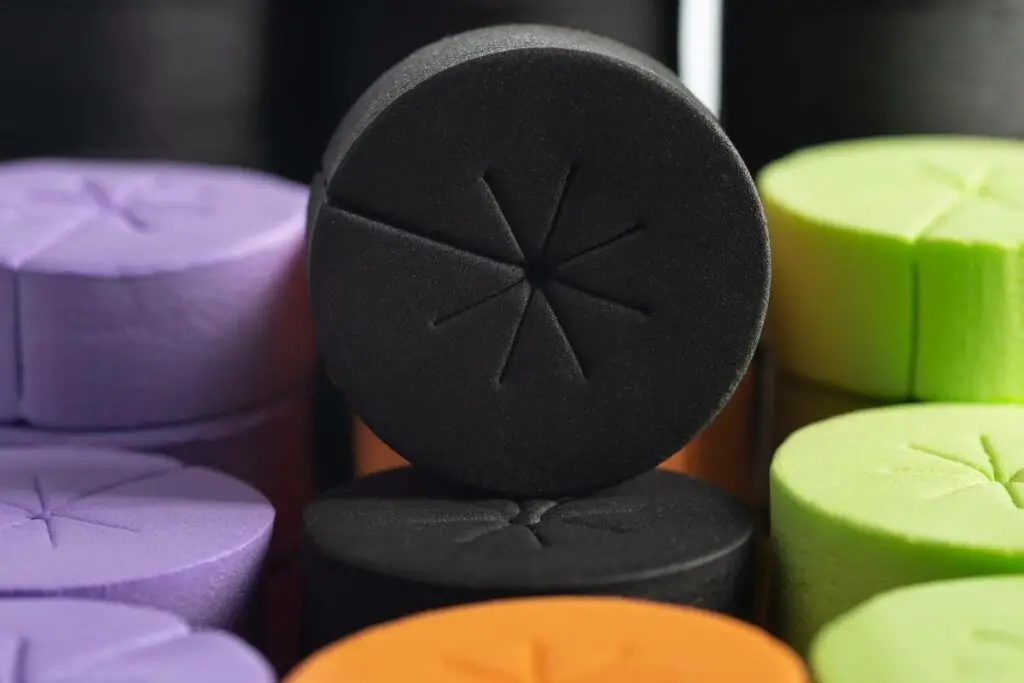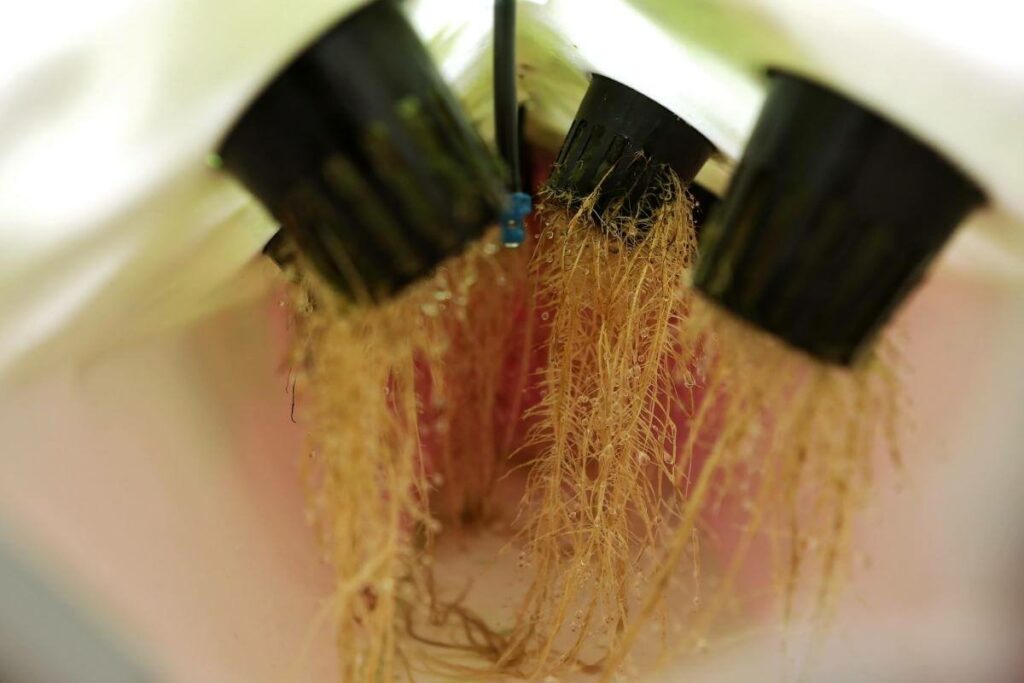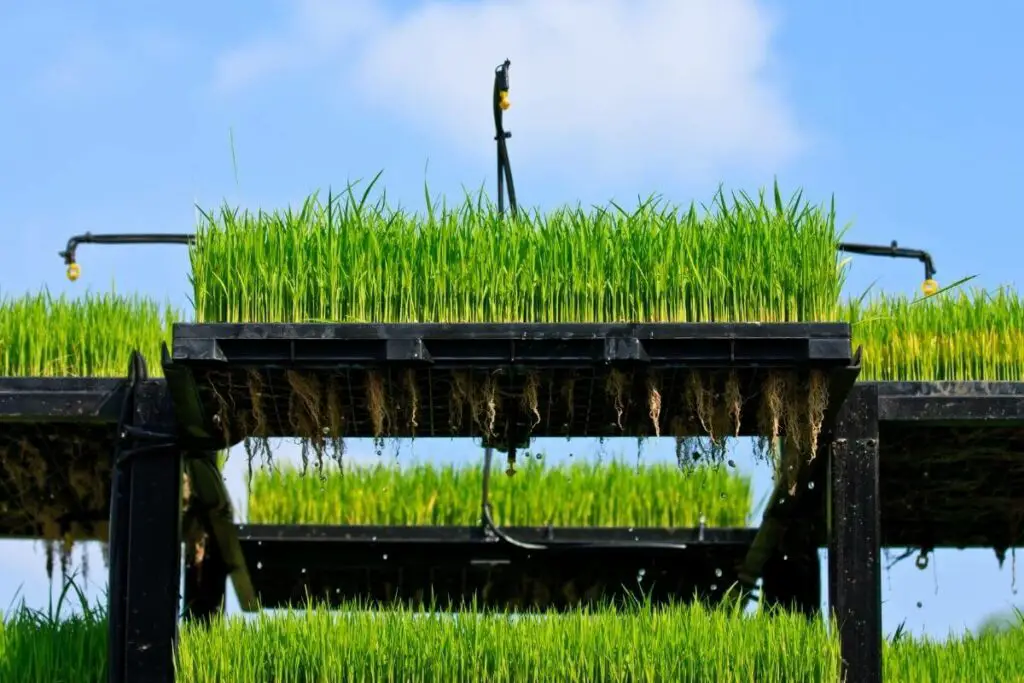The agriculture sector has been revolutionized over the past decade, and today, you don’t need large pieces of land to sustain food.
Smart farmers are growing crops in their backyard, in the garage, etc. This soil-less farming has helped the world meet the ever-rising food demands quickly and conveniently.
One of the soil-less methods for sustainable agriculture is the Aeroponics system.
But how does the system yield crops?
What Is an Aeroponics System?
An aeroponics system is a form of hydroponics, where the plants’ roots are suspended in the air instead of growing in a medium such as soil or clay pebbles.
These roots are periodically sprayed with nutrients through a mist of water spray.
This type of hydroponics has one of the highest productivity rates because the air-suspended roots are surrounded by oxygen.
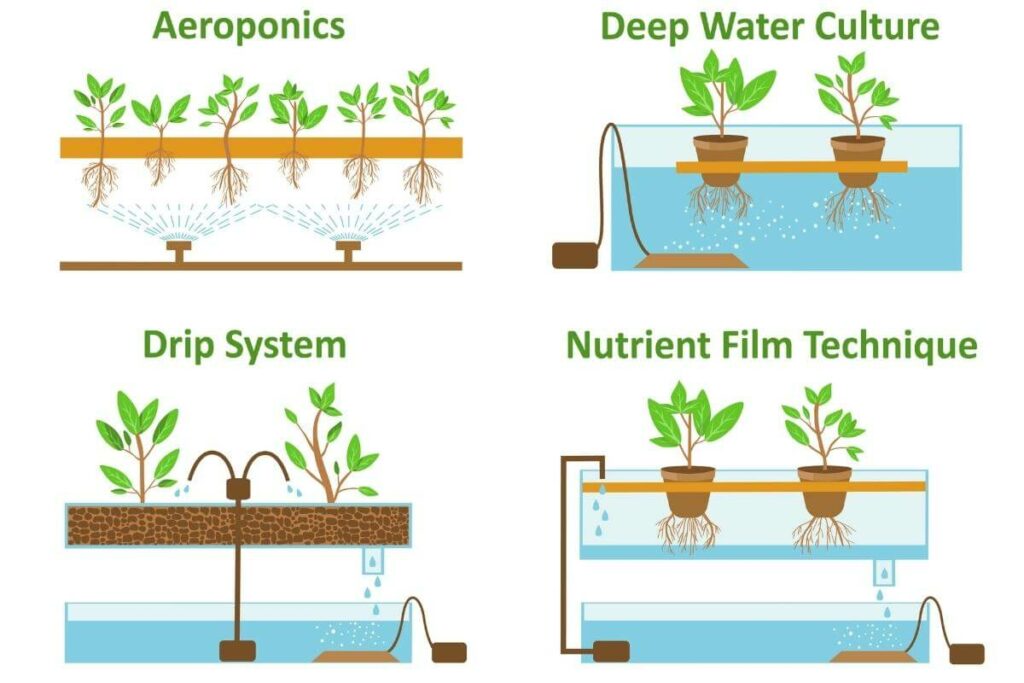
Adequate oxygen speeds up the uptake of nutrients by the roots.
There are two types of Aeroponics systems:
- Low-pressure Aeroponics (LPA)
- High-pressure Aeroponics (HPA)
What Is the High-pressure Aeroponics (HPA) System?
In the high-pressure aeroponics system, the plant roots are suspended entirely, and the only nutrient source they get is a high-pressure mist of 20-30 micrometers.
This mist may range from 25psi to 100psi, depending on whether the system is a small-scale or commercial project.
A special pump, commonly a reverse osmosis pump, pumps the nutrient-rich water through a misting head that produces the fine mist, which is discharged to the roots for a few seconds every few moments.
The HPA also requires electric valves, accumulator tanks, pressure valves, and other equipment to function seamlessly.
The HPA is the most cost-efficient and sustainable aeroponics method because the roots absorb the mist instantly.
Good News: There are barely any lost nutrients because most of them are absorbed as soon as the microdroplets hit the root surface.
Advantages of High-pressure Aeroponics System
- It is the most efficient aeroponics method because it uses little water and roots absorb almost all the nutrients instantly.
- Due to the instant nutrient uptake, HPA plants grow fast- up to 20% faster than other hydroponics.
- Saves water.
- The system may survive short periods of a power outage, unlike the low-pressure aeroponics that solely depends on electric power to pump the nutrients.
Disadvantages of High-pressure Aeroponics System
- HPA demands expensive upfront and set-up costs.
- It requires a learning curve, so it is not beginner-friendly.
- Pump malfunctions may cause loss of plants if repairs are not done soonest.
- The misting head may get clogged once in a while by mineral particles in the water.
What Is the Low-pressure Aeroponics System (LPA)?
Low-pressure aeroponics (LPA) is also referred to as the soakponics system due to the appearance of the roots.
The roots are always wet, and dripping excess nutrient mix back into the water reservoir.
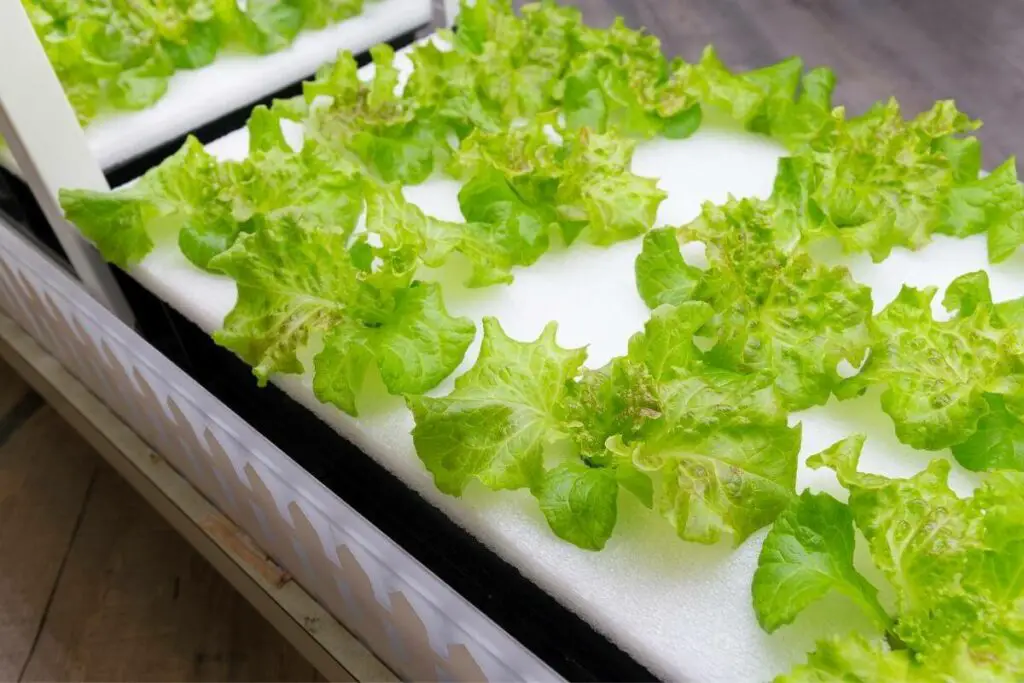
In this system, the plant roots are suspended in the air but may be partly in contact with the nutrient mix in the accumulator.
The pump forces the nutrient mix through a nozzle that periodically sprays water droplets to the roots.
Unlike in the HPA, where the mist is fine and easily absorbed, the LPA mist is coarse and is not absorbed instantly (at least not most of it).
What Happens Next: The excess droplets trickle down the roots and drip back into the water reservoir.
Advantages of Low-pressure Aeroponics System
- This method is easy to set up and maintain.
- It is relatively cheap to buy and set-up.
- It is more efficient than other non-aeroponics types of hydroponics.
Disadvantages of Low-pressure Aeroponics System
- The system solely depends on the pump, so even the briefest power outage may affect the plants.
- LPA uses more water due to the large water droplets that hit the roots then drip back to the reservoir.
High Pressure vs. Low Pressure Aeroponics
Each of the two systems has its benefits and drawbacks.
We will pin them against each other to determine which method is better:
- their ease of use
- upfront and maintenance cost
- the type of pump used
- the mist type
- nutrient efficiency
Ease of Use
The ease of use depends on the technical know-how of an individual for any of the systems.
However, HPA is challenging to set up initially, but once put in place, the system requires minimal maintenance and monitoring.
On the other hand, LPA demands continuous monitoring of the water nutrient mix because the dripping nutrient mix can alter the PH of the water in the reservoir.
Upfront and Maintenance Cost
HPA has a higher upfront cost because it needs more equipment.
However, after the initial installation, the prices reduce because you don’t need to monitor many conditions.
The only thing you need to adjust is the nutrient levels in the water, then leave the rest of the work to the pump and misting head.
LPA is cheap to buy and set up but requires constant monitoring and maintenance.
The pump draws large volumes of water under low pressure. This uses more electricity, thus costing you more.
Type of Pump
HPA pumps are specially made to pump low volumes of water at high pressure to produce misty micro-droplets.
These pumps are commonly the reverse osmosis pump types such as the Aquatec 8880 Series.
On the other hand, LPA needs pumps that push large volumes of water at low pressure. An example of a suitable LPA pump includes the pond-type pump.
The Mist Type
The high pressure vs. low pressure aquaponics mist is the most significant difference between the two systems.

The HPA produces a fog-like mist, with fine droplets between 20 and 50 micrometers in diameter.
The LPA, however, produces coarse and more extensive water droplets that hit the root system and make it dripping wet.
The roots cannot absorb all the water due to the large droplet size, unlike in the HPA, where the micron-sized droplets get absorbed instantly.
Nutrient Efficiency
In high-pressure aeroponics, the system is the most suitable and nutrient efficient among all types of hydroponics.
The pump draws little amounts of nutrient-rich water and pushes it through the misting head to produce ready-to-absorb fine droplets.
There will be zero or little drip with the proper system tuning, making HPA the most economical aeroponics design.
On the other hand, low pressure aeroponics is slightly wasteful on nutrients.
Though the dripping nutrient-rich water is recycled back to the system, the pump requires large amounts of water hence the need to add more nutrients.
High Pressure vs. Low Pressure Aeroponics- Which Is Better?
Both systems offer an eco-friendly and soilless way to produce crops.
At the end of the day, personal preference, aeroponics’ size, and farming goals will determine which system works best for you. However, high-pressure aeroponics takes the crown due to its ease of operation, low running and maintenance cost, and faster plant growth.
Conclusion
Aeroponics is a type of soil-less farming where the plant roots are suspended in air, spraying the nutrients onto the roots as water droplets.
There are two types of aeroponics: high pressure (HPA) and low pressure (LPA).
The former uses low amounts of water forced through misting heads under increased pressure to produce fog-like mist to supply nutrients to the roots.
The latter uses large quantities of water under low pressure, sprayed onto the roots through a nozzle, producing coarse water droplets.
HPA is better than LPA because it incurs fewer operation costs and is more nutrient-efficient.
